For those interested in learning more about the Indigenous people of Japan, a trip to Hokkaido is not complete without paying a visit to one of its newest cultural institutions, the Upopoy National Ainu Museum. Opened in the summer 2020, this national center is dedicated to showcasing Ainu language, history, vibrant traditions, and the living culture of the Ainu people.
The open-air Museum represents the progress of cultural understanding about the Ainu, the Indigenous people of Hokkaido. Both within the dominant culture in the country and for visitors from around the world. Upopoy plays an important role in raising awareness of Ainu history in Japan, representing a step forward along the journey to reconciliation.
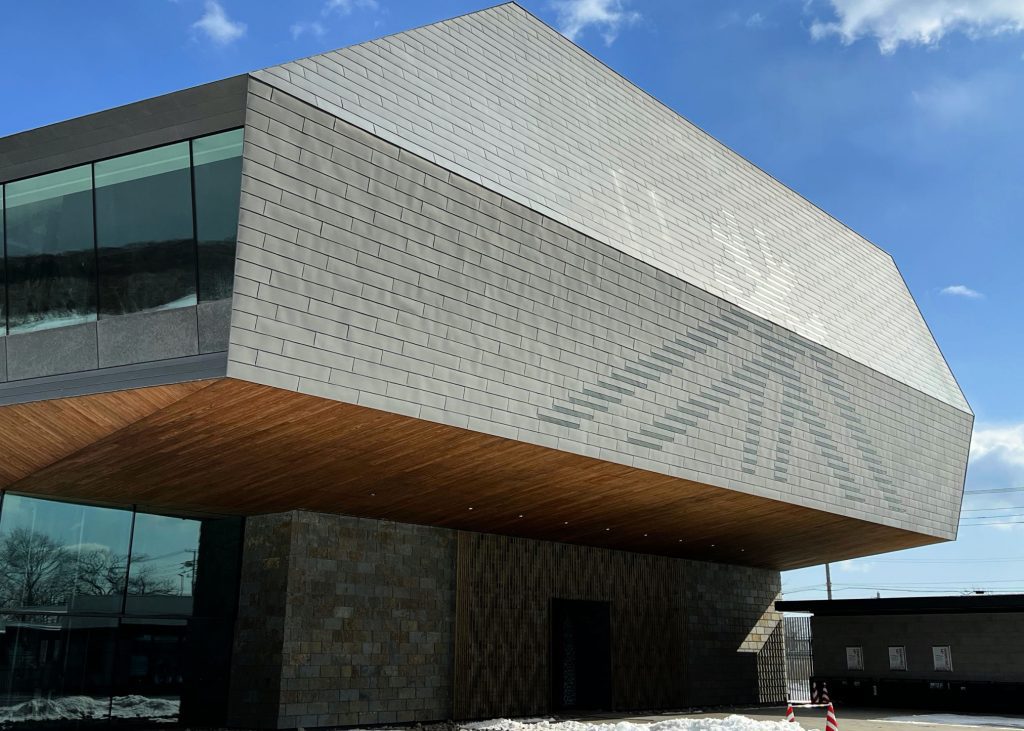
The Upopoy National Ainu Museum
Located in Shiraoi, about 1.5 hours from Sapporo, the Upopoy National Ainu Museum offers visitors an immersive trip through the world of the Indigenous Ainu people, providing a glimpse into their way of life, customs, and beliefs.
Upopoy, an Ainu word meaning “singing together in a large group,” aims to revive and protect Ainu culture. It’s the northernmost national museum in Japan, situated in an expansive open-air park space on the shore of Lake Poroto, about 40 minutes from New Chitose Airport outside of Sapporo.
The campus includes a large two story Museum, a Cultural Exchange Hall for performances of dancing and singing, a Crafts Studio where visitors can see artisans at work doing wood carving and weaving, and a Museum Shop.
There’s also a Memorial Site, established to provide a dignified memorial and to ensure that Ainu remains are handled appropriately until such time as arrangements for their return to the Ainu are established.
For anyone interested in learning more about the Indigenous people of Japan, a trip to Upopoy is an essential visit.
Use the map below to search for hotel and short-term rental options

A journey through time and culture
Upopoy National Ainu Museum and Park is the first national museum in Japan to present and celebrate Ainu culture. The modern building echoes traditional Ainu architectural style while incorporating elements of concrete, glass and wood.
The large Permanent Exhibition is the heart of the museum. Led by our young Ainu guide, Setascape Konno, I spent hours exploring exhibits of intangible cultural heritage. Descriptive signage is available in both English and Japanese.
The Museum is home to special exhibitions, short films and displays of historical documents and artifacts that inform and educate visitors about the development of Ainu culture over the millennia. The exhibitors showcase the diversity of contemporary Ainu culture, and as a foreign visitor, I found them fascinating and highly educational.
I lingered at interactive displays and multimedia presentations showcasing the past and present aspects of Ainu culture, going back 30,000 years. The museum does an excellent job of presenting the long arc of Ainu history and culture. This includes acknowledging their assimilation by the dominant Japanese culture over the centuries.
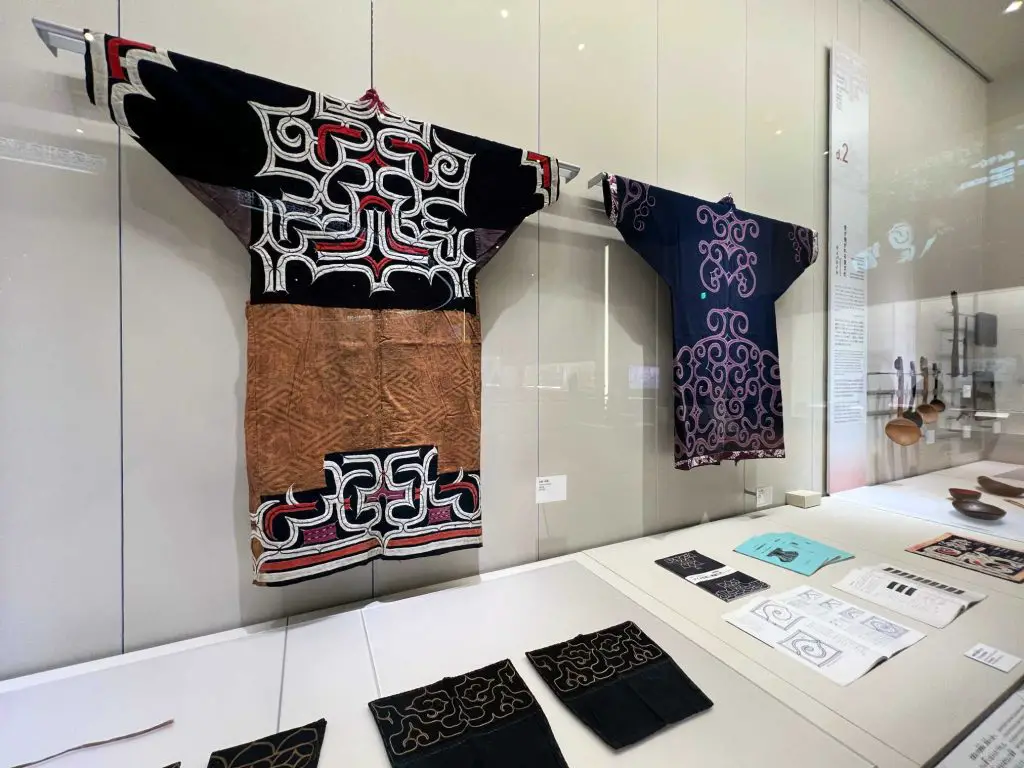
The Ainu have a strong tradition of oral storytelling. Many stories highlight how the Ainu observe nature and move in the world.
In Ainu mythology, everything in the world has a spirit and is connected. The spirits become ‘kamuy,’ (supernatural deities) and must be handled with care and respect. Flora, fauna, fire, water, wind, mountains, and rivers are all kamuy. They manifest in the human world with gifts such as meat and furs.

We owe our lives to nature, including to the trees, which protect the earth and keep humanity alive.
Debo Akibe, Ainu elder
Preserving tradition and knowledge
At the heart of Upopoy is its mission of preserving and promoting Ainu culture. It’s also a place for today’s Ainu to reconnect with their roots. In Japan today, the current population of Ainu is small. In the last official survey by the Japanese government in 2017, only 13,118 people identified as Ainu in Hokkaido. Japan’s northernmost prefecture has a total population of about 5.2 million.
The Museum plays an important role in fostering cross-cultural understanding. In the open-air National Ainu Park, there are several tradition reed cise (Ainu term for houses) comprising a kotan, a traditional Ainu village. There are displays of traditional weaving and carving, and salmon drying on wooden racks.
Visitors can go inside one of the Ainu cise, and try hands-on activities like embroidery and archery. Or learn to play traditional musical instruments. It’s an excellent place to enjoy various elements of Ainu culture.
Beyond showcasing examples of Ainu tools, clothing and artwork, Upopoy hosts workshops, demonstrations, and performances. These allow visitors to experience Ainu culture and traditions firsthand.
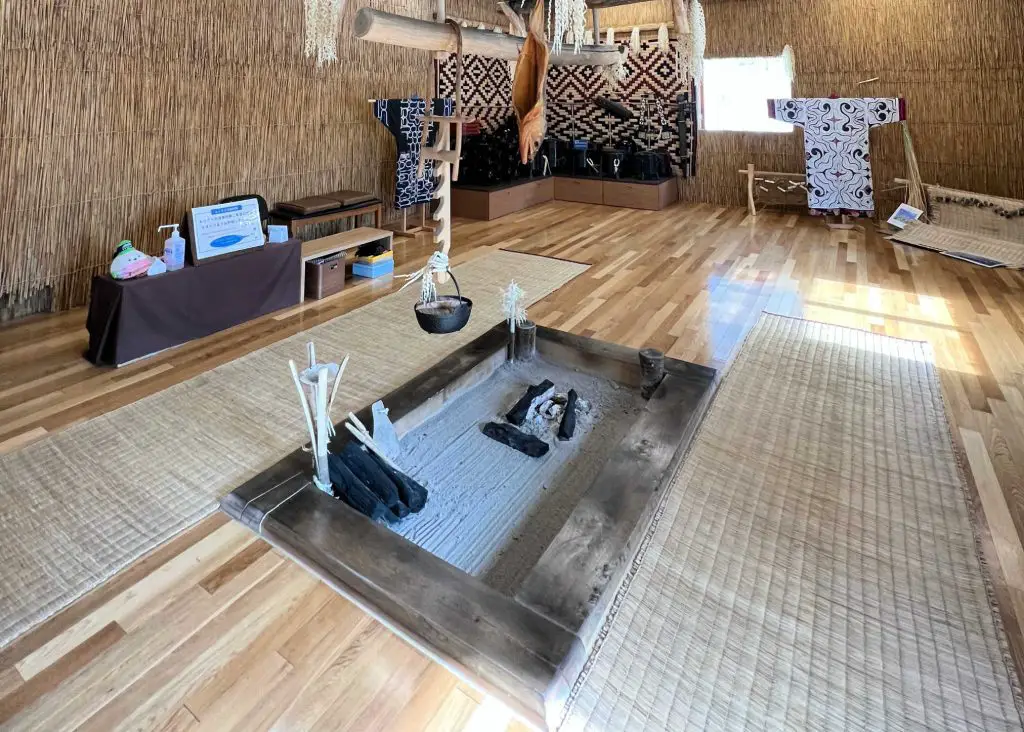
These interactive experiences range from crafting traditional Ainu garments to participating in music and traditional dance performances. The chance to try these experiences fosters a deeper appreciation for the cultural significance of these practices.
After several lackluster attempts at archery, I attended mesmerizing traditional dance performance at the Cultural Exchange Hall. Through singing in a large group and traditional dances, Ainu men and women told stories about hunting, animals and nature. They wore woven clothing in traditional colors of red and blue. The poignant emotions in their songs and dances crossed all linguistic boundaries.
There was also an incredible performance of the Ainu mukkuri mouth harp. A small instrument made of bamboo and string, the mukkuri produces sounds mimicking nature.

Where to eat at Upopoy
Diners can enjoy Ainu dishes and traditional Ainu foods like grilled meat, salmon and vegetables at the Haru Ran Na Open Flame Dining and Cafe. If you’re limited on time, stop into Hinna Hinna café and pastry shop for a quick bite of curry or ramen.
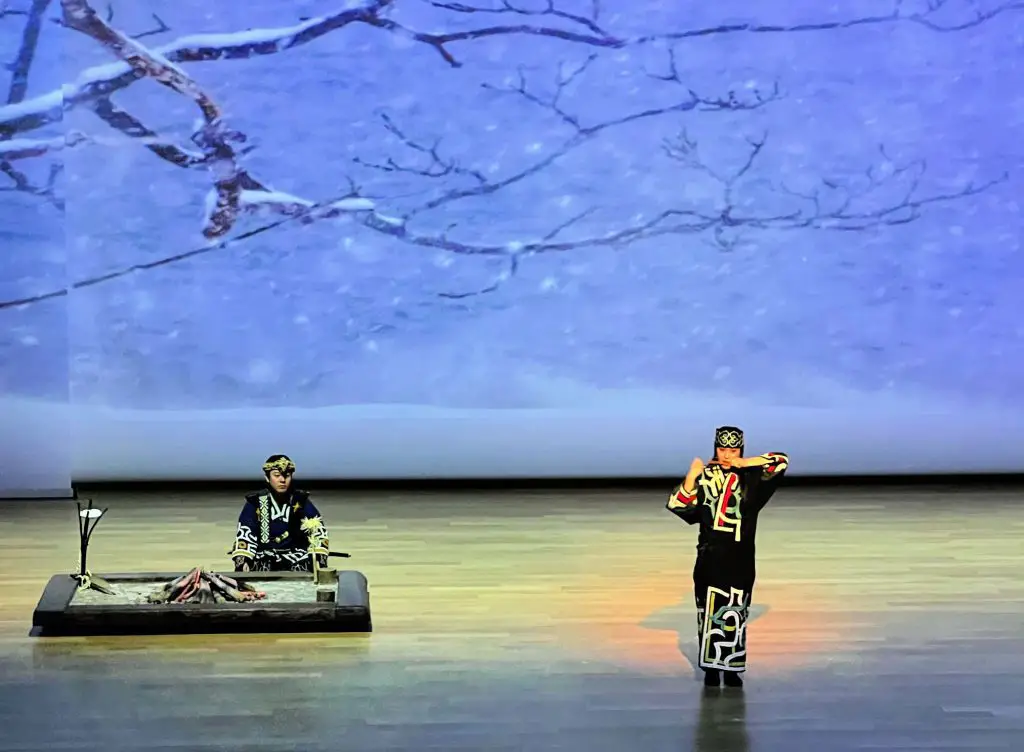
Celebrating the culture of the Indigenous Ainu people
As a cultural institution, Upopoy National Ainu Museum has an important role to play in fostering education and understanding. Its existence has also sparked an unprecedented broader discussion in Japan.
“The decolonization of museums in Japan is a controversial issue. We are starting to create this space to think of Japan as non-homogeneous,” notes sociologist Mariko Murata, a professor at the Department of Sociology at Kansai University.
A trip to Upopoy can be the beginning of a greater understanding of the Ainu, and of how they and Japan may redefine their future relationship in promoting the living Indigenous culture that exists in Hokkaido.
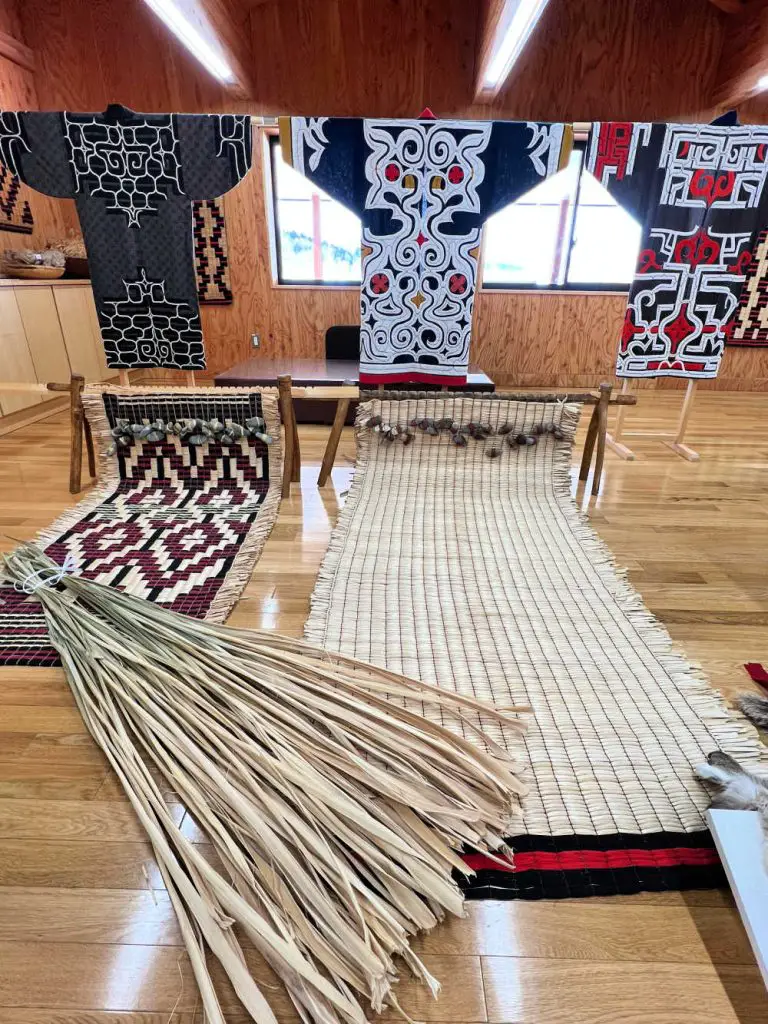
Pin for Later
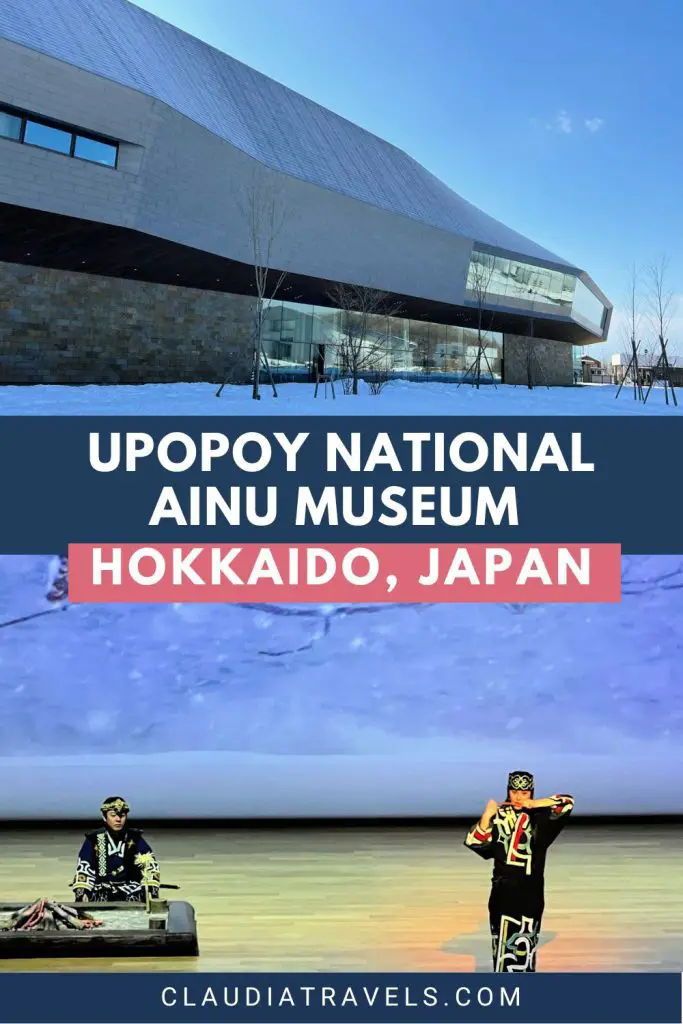
Disclosure: The writer visited Upopoy as a guest of the Japan Tourism Bureau.
Photo credit: Claudia Laroye
- How to spend an unforgettable two days in Venice, Italy - April 25, 2024
- The Best Carry-on Luggage 2024 - April 15, 2024
- 9 essential tips for surviving road trips with teenagers - April 6, 2024
